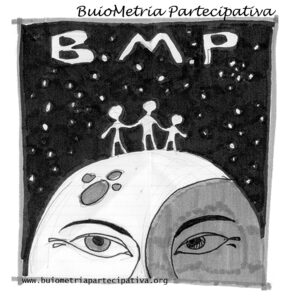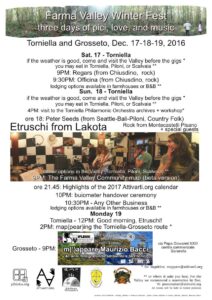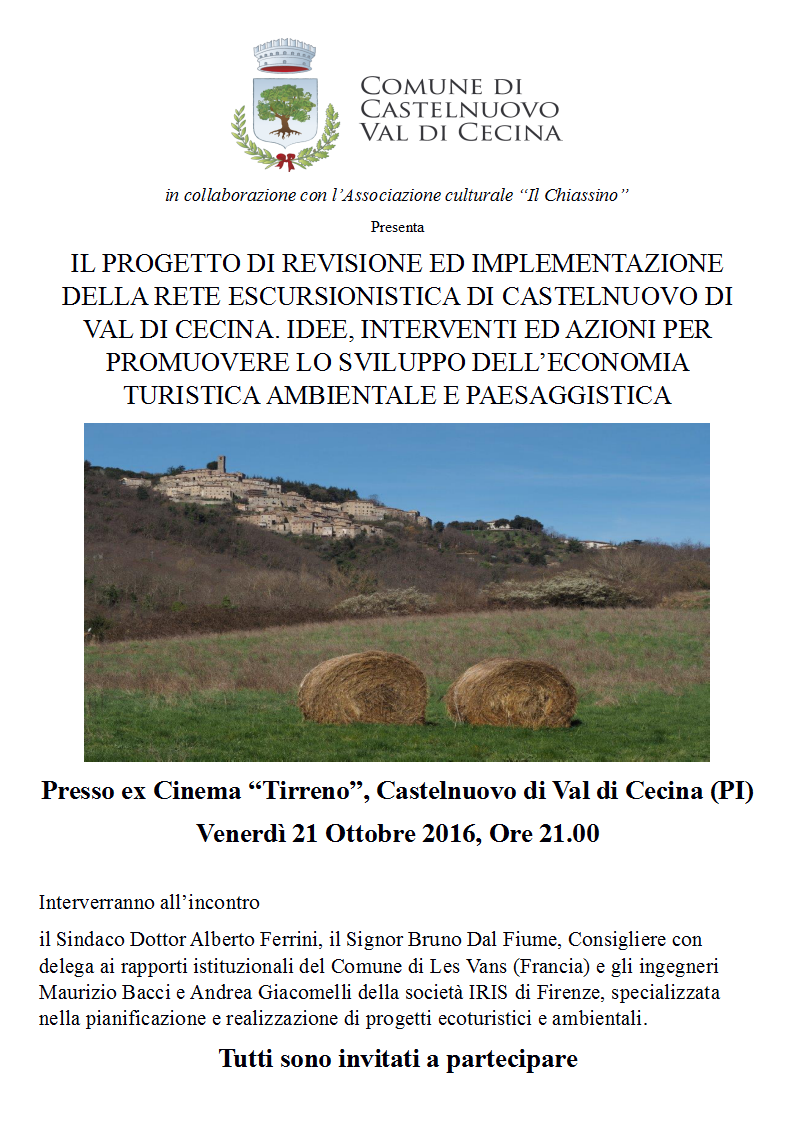The pibinko.org network has been acknowledged as one of the first “Friends of the New European Bauhaus initiative” by the European Commission. Below is what we wrote. For more information and booking: micalosapevo@pibinko.org
Andrea Giacomelli <info@pibinko.org>
Web:
http://www.pibinko.org
About us:
The pibinko.org network operates since 2007 on interdisciplinary projects on the promotion and/or protection of lesser-know assets in the field of culture, environment, and open innovation. These projects are built with a bottom-up approach, and are always co-designed involving experts and local communities, with an emphasis on empowerment, inclusiveness, and equality. All of our activities come with a soundtrack, as we use music as a primary engagement and facilitation vehicle (and part of the network also performs in professional gigs as an art+science collective, so we actually write songs as soundtracks to our work). The NEB framework reflects a lot of the work we have been developing over the past 15 years, so we are looking forward to contribute with what the NEB community will consider as best practices, which can easily be replicated in other locations. As we are based in Southern Tuscany, we can also easily procure interesting venues for other NEB communiy members.
Our size:
10
Field of activity:
Other field of activity
We work in a truly interdisciplinary mode (we need 9 fields)
Event and experience creation and management: Since 2007, and not stopping during lockdowns. Music: “ConcerPT” entertainment with the Jug Band Colline Metallifere arts+science collective. Also, providing art direction and booking in collaboration with several venues in Italy. Interesting Locations for rent (Farm houses, vacation homes, resorts, agricampings, castles, as well as research sites) Itineraries: in-depth knowledge of South-Western Tuscany for various segments of visitors “Mouthwatering stuff” produced by family-run businesses not only from Tuscany and not only from Italy Geographic information systems, websites and databases Environmental engineering and land planning Translations and language-related services: from English to Italian Production of photo sets and videos Promotion, communication, facilitation Consulting, training, and mentoring We work in Italian, English, or French, and are acquainted with other languages (Portugues, Spanish, German)
Client type:
We have a community of Culture, environment, open innovation, music people
Highlights:
We have a community of Sustainability, aesthetics, and inclusion are in the DNA of our network. Since 2006 we have developed projects on the protection and promotion of lesser-known assets in the fields of culture, environment, and open innovation using mainly participatory processes, facilitation, and empowerment methods which we have co-designed putting together scientist and urban activists with citizens from marginal rural areas. Our base in in Southern Tuscany, and we operate internationally. people
Alignment with the New European Bauhaus values:
- we offer access to labour to the underprivileged
- we use circular approaches across our entire production cycle
- we mainly reinvest our profit into our activity
- we compensate fairly, without inequalities
- we adopt open and participative governance structures
- we adopt design-centred trans-disciplinary approaches throughout our practices
- other
As above, we are already used to work with the values proposed by the NEB, so rather than planning on how to integrate them in our day-to-day activity, I would propose to our key collaborators to “map” the values we are currently promoting to NEB values. Should any gaps appear, we will work on covering them. In any case we have monthly meetings where these values can be reviewed, and “integration actions” can be adopted where necessary.
Motivation to become partner or friend:
- Sharing knowledge within the multi-disciplinary community of partners
- Taking my activities to the next level by working together with others from the multi-disciplinary community of partners
- Influencing the New European Bauhaus concept itself
- Influencing broader EU policy related to the New European Bauhaus
- Gaining visibility
- Being able to better inform my local community about what the New European Bauhaus is
- Being able to better help my local community to apply for funding related to the New European Bauhaus
- Being able to better help local stakeholders near me to be part of the New European Bauhaus movement and integrate its values
Engagement with the New European Bauhaus:
Acting as the hub network of small (or micro-) businesses, associations, and other local actors with a very global view of the issues we are tackling, we would like to engage with the NEB community following a process which has proved to be successful in the past with other communities. The concept is not new (it could be summarised as “what can we do for NEB + what can NEB do for us”), with the variant that (a) we use songs as a primary communication vehicle (b) In our first months in the community we will dedicate efforts to explain the NEB principles and framework to our local collaborators (and their communities, which cover roughly the South-Western quadrant of Tuscany, plus the city of Milano as base points), and propose to other NEB community members material and events (e.g. meetings, combining physical and online presence) to better introduce us. Based on this “icebreaking” phase, further initiatives will follow.
Since 2007 we have a record of an average of almost one event per month, and at least weekly updates sent to our audience via various online channels, plus “traditional” media. The plan is simply to embed NEB values (which are actually already at the core of our work since 2007, but called differently) in our awareness raising/promotion work.
We are interested in:
We work on extremely diverse projects, but – independently of the topics and locations – our priorities are on re-balancing the distribution of certain assets around Europe (and not ignoring extra-European regions). In particular, we are interested in setting up twinning/exchange operations which will help (a) citizens from disadvantage rural areas to gain expertise and know-how on non-rural issues, helping them to improve the quality of their life and to mitigate population loss in these areas (we are also based in one of these areas, by the way) (b) citizens from urban settings to learn more about “rural ways” which the can re-apply in their home environments. Since 2017 our projects are engineered to provide educational/training credits (for those who need them as a formal way to document their personal growth).
Host:
We have experience working in EU-related projects since 1994. Personally, I have been the facilitator of a working group for the creation of the INSPIRE Directive, and have acted as the Italian representative in a COST Action, worked twice as a EU project reviewer, etc. – so we are quite familiar in terms of connecting to EU-related initiatives. I am also quite familiar with the concept of acting as a “bridge” or an “ambassador” between EU-level initiatives and local communities…so I cannot be more specific at this stage, but on a case-by-case basis I do not foresee issues in providing a productive support from the pibinko.org network.
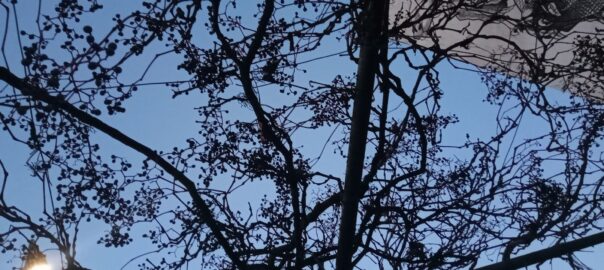
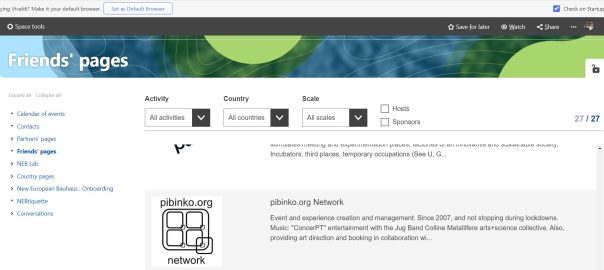
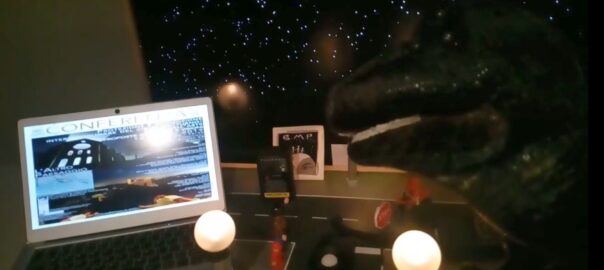
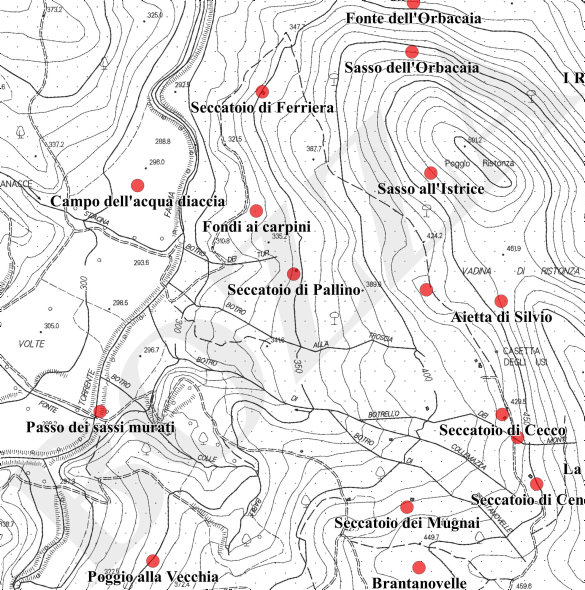 The Farma Valley Community Map was created by using as a base map the current Tuscan administration official base maps (1:10000 scale), interviewing the elders of the three villages (Torniella, Piloni, and Scalvaia), in order to document points of interest and other information which does not exist in the official maps, but is relevant for the locals.
The Farma Valley Community Map was created by using as a base map the current Tuscan administration official base maps (1:10000 scale), interviewing the elders of the three villages (Torniella, Piloni, and Scalvaia), in order to document points of interest and other information which does not exist in the official maps, but is relevant for the locals.